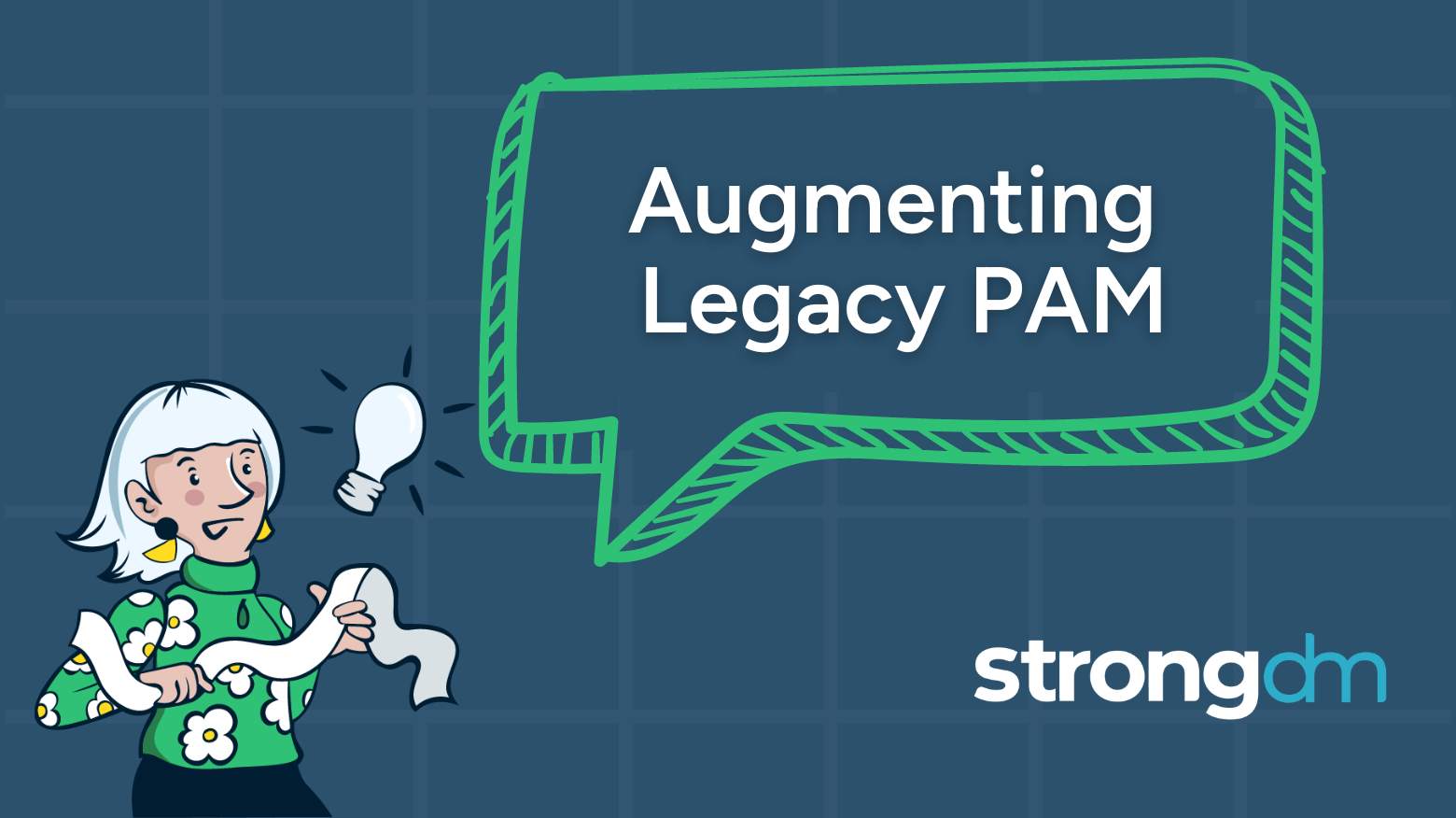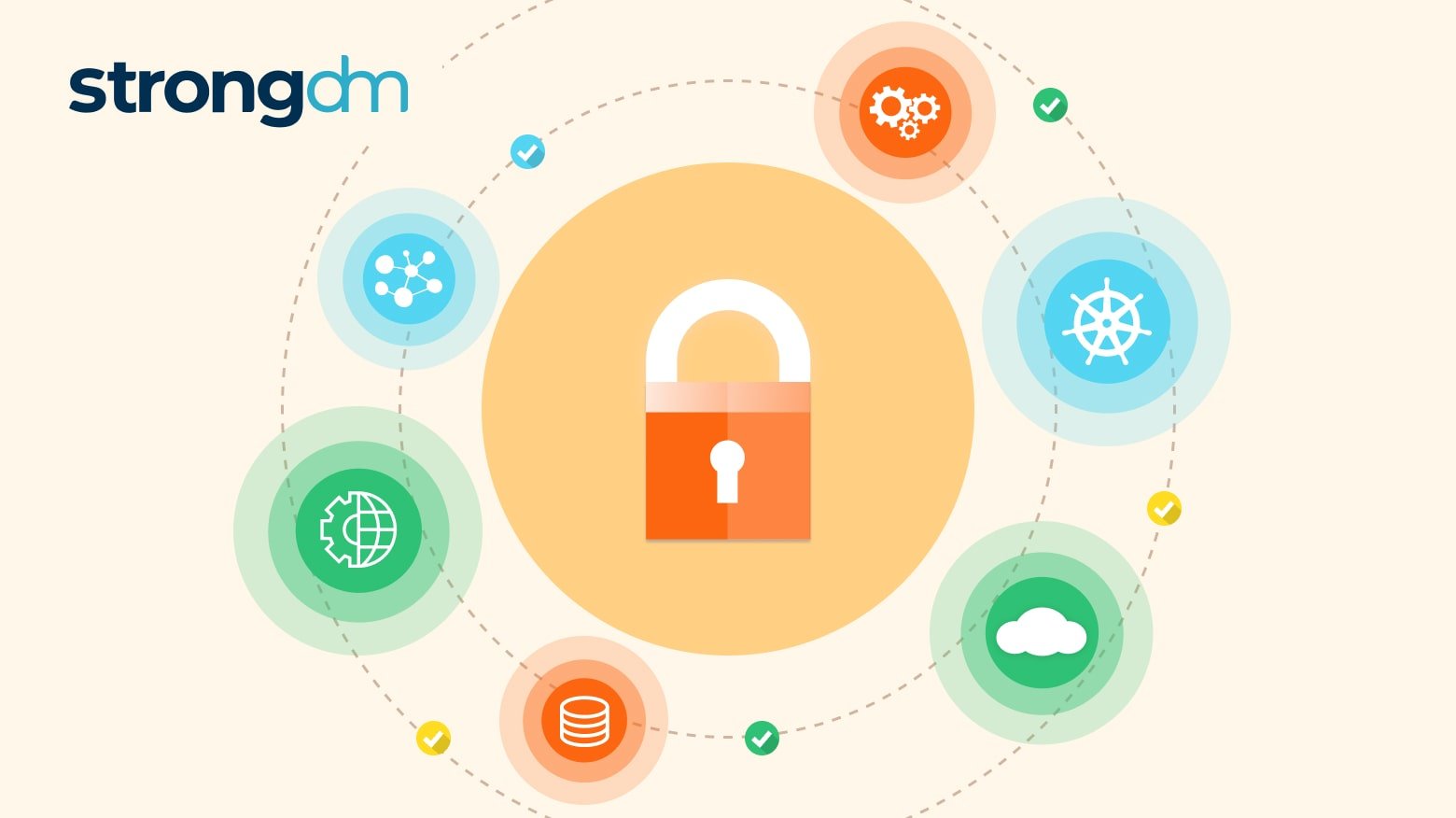Let’s talk about the unsung heroes of your on-premises infrastructure: network devices. These are the routers, switches, and firewalls that everyone forgets about…and takes for granted—until something breaks. And when one of those somethings breaks, it leads to some pretty bad stuff. If your network goes down, that’s bad, bad, bad for business. But if those devices lack the necessary security, well, that can leave you exposed in an incredibly dangerous way.
Posts by Category:
- Security
- Access
- DevOps
- Privileged Access Management
- Auditing
- Zero Trust
- Compliance
- Policy
- Databases
- SOC 2
- Authentication
- Identity and Access Management
- Team
- Compare
- Engineering
- Integrations
- Product
- Kubernetes
- AWS
- Productivity
- Podcasts
- SSH
- Observability
- HIPAA
- ISO 27001
- Role-Based Access Control
- Dynamic Access Management
- Secure Access Service Edge
- Webinars
- Events
- NIST
- Onboarding
- Passwordless
- Offsites
- Platform
- PCI

Privileged Identity Management (PIM) is a complex cybersecurity approach. But it’s the only proven method you can use to lock down access and protect your precious resources. It can help you keep cybercriminals out and ensure that even your trusted users can’t accidentally—or intentionally—jeopardize your system’s security.

IGA (Identity Governance and Administration) manages user identities and access across the organization, ensuring proper access and compliance. PAM (Privileged Access Management) secures privileged accounts with elevated permissions by using measures like credential vaulting and session monitoring to prevent misuse. While IGA handles overall user access, PAM adds security for the most sensitive accounts.

In essence, legacy PAM solutions over-index on access. StrongDM uses the principles of Zero Trust to evaluate and govern every action, no matter how minor - where each command, query, or configuration change is evaluated in real-time against dynamic policies that adapt to the context of the user, the sensitivity of the action, and the prevailing threat landscape.

The way that people work continues to evolve, and as a result, so do the ways that they must authenticate into their organization’s resources and systems. Where once you simply had to be hardwired into the local office network, now you must expand your perimeter to include remote and hybrid workforces, on-prem and cloud environments, and take into account a growing list of factors that impact how and where people access critical company resources.

Understanding the pillars of access control and following best practices for PAM gives you a roadmap to an implementation that is secure and comprehensive with no security gaps. This article contains nine essential privileged access management best practices recommended by our skilled and experienced identity and access management (IAM) experts.

Vendor Access Management (VAM) is the systematic control and oversight of vendor access to an organization's systems, applications, and data. It involves processes such as onboarding and offboarding vendors, utilizing solutions for Just-in-Time access, ensuring security, and streamlining workflows to minimize operational inefficiencies.

The New York Department of Financial Services (“NYDFS”) Cybersecurity Regulation is a set of comprehensive cybersecurity requirements that apply to financial institutions operating in New York. The goal of the regulation is to ensure that the cybersecurity programs of financial institutions have robust safeguards in place to protect customer data and the financial sector.

I'm continuously shocked by how poorly the PAM industry has treated customers to date. Shame on CyberArk, Delinea, and all the rest of you for persisting with such predatory models. The business model is "squeeze the blood out of them, then squeeze harder." The deployment model is "you'll never ...

Secret vaults ensure that sensitive and privileged credentials are well protected, rotated, and only used–or checked out–when necessary. This makes them a critical and foundational tool for credential protection in modern infrastructures.

The inability to audit, track, and understand how permissions are being used (or if they’re used at all) has been non-existent. Until now. The findings are clear: organizations need visibility into privileged access and its usage to fully understand and address their total attack surface.

We constantly hear about the gender gap in technology. Whether it’s the shortage of female founders and CEOs, claims of discrimination, or the comparatively small number of women in computer science majors, it seems that the issue has become a regular feature story in the news cycle. Disagreement over how to respond abounds on social media, in editorials, and not infrequently within tech companies themselves.

Is your organization overwhelmed by rampant service account sprawl? Rest assured, you can regain control. Modern Privileged Account Management (PAM) tools and practices empower you to overcome the challenges of unchecked service accounts. The information in this article will help you understand the meaning of service accounts, so you can manage your organization’s service accounts more effectively and mitigate their risks. Robust security is attainable for all your privileged accounts.

The cost of a privileged access management (PAM) solution goes beyond the licensing fees. While it’s tempting to look only at the initial costs, evaluating privileged access management pricing includes examining other factors to determine whether the solution will provide a real Return on Investment (ROI) or cause more problems than it solves.

